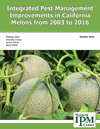Special Reports
The Western IPM Center periodically publishes special reports documenting the adoption, impacts and evaluation of integrated pest management.
Introduction to the Western IPM Center
This 12-page booklet highlights the work the Western IPM Center does and the value it adds to IPM programs in the West and nationally. If you're looking to learn more about what the Regional IPM Centers do and why they matter, this is a great place to start.
Download the Report (12 pages, pdf)
Changes in Pest and Pollinator Management for Alfalfa Grown for Seed from 2005 to 2017
This report highlights how alfalfa seed growers adapted to the challenge of managing insect pests while protecting vital pollinators by comparing grower-identified priorities in 2005 and 2017. Over that dozen-year period, pollinator protection became more of a focus and more integrated into pest-management practices.
Download the Report (8 pages, pdf)
Pest Management Changes in Mint Production in the Pacific Northwest Since 2002
This report documents integrated pest management improvements in the Pacific Northwest mint industry by comparing pest management strategic plans from 2002 and 2019 and describing pest-management advances made since 2019. Diseases remain the biggest pest threat to mint, although genomic sequencing is under way and could help breeders develop disease-resistant varieties.
Download the Report (8 pages, pdf)
Changes in Integrated Pest Management in Hazelnut Production in Oregon and Washington Since 2006
This report documents integrated pest management improvements in the hazelnut industry by comparing pest management strategic plans from 2006 and 2018 and describing pest-management advances made after 2018. The most important of these changes was the development of disease-resistant cultivars that have greatly expanded hazelnut acreage after 2009.
Download the Report (8 pages, pdf)
Changes in Integrated Pest Management in Strawberry Production from 2003 to 2021
This report documents integrated pest management improvements in the strawberry industry by comparing pest management strategic plans from 2003 and 2021, including adaptations to the myth bromide ban, newer insecticides that better align with IPM principles and technological advances including bug vacuums.
Download the Report (8 pages, pdf)
Changes in Integrated Pest Management in Lettuce Production from 2003 to 2020
This report documents integrated pest management improvements in the lettuce industry by comparing pest management strategic plans from 2003 and 2020, including advances in pathogen control, newer insecticides that better align with IPM principles and technological advances including robotic weeders.
Download the Report (4 pages, pdf)
Changes in Integrated Pest Management in California Prunes from 2002 to 2018
This report documents integrated pest management improvements in the California prune industry by comparing pest management strategic plans from 2002 and 2018.
Download the Report (4 pages, pdf)
Integrated Pest Management Improvements in California Melons
This report documents integrated pest management improvements - including significant reductions in hazardous insecticides and soil fumigants - by comparing pest management strategic plans from 2003 and 2016.
Download the Report (8 pages, pdf)
Integrated Pest Management of Mosquitoes
This report looks at case studies of three different mosquito and vector control districts in California to show how they use integrated pest management to accomplish multiple goals simultaneously: protecting citizens from mosquitoes, limiting exposure to chemical control agents, and achieving both goals with limited funding.
Download the Report (23 pages, pdf)
Integrated Pest Management Improvements in Hops from 2008 to 2015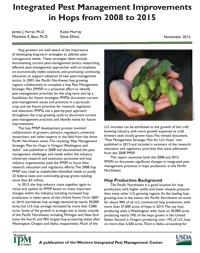
This report compared Pest Management Strategic Plans for hops in 2008 and 2015 to look at improvements in integrated pest management in one crop over time. Our review found significant IPM improvements in the management of spider mites, prionus beetles and mildew diseases, and regulatory changes promoting the use of reduced-risk pesticides.
Download the Report (4 pages, pdf)
Retrospective of the Regional IPM Grants Program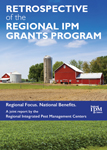
The Regional IPM competitive grant program promoted scientific advances in integrated pest management to reduce risks of pest and pest management practices. This retrospective of the Regional Integrated Pest Management Grants Program highlights some of the important and varied research and extension conducted while the Regional IPM Centers administered the grant program.
Download the Report (12 pages, pdf)
Impacts of the Regional Integrated Pest Management Competitive Grants Program in the Western United States
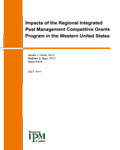 The Regional IPM competitive grant program promoted scientific advances in integrated pest management to reduce risks of pest and pest management practices. From 2003 to 2014, the Western IPM Center organized the grant review panel, which selected projects based in part on regional priority needs.
The Regional IPM competitive grant program promoted scientific advances in integrated pest management to reduce risks of pest and pest management practices. From 2003 to 2014, the Western IPM Center organized the grant review panel, which selected projects based in part on regional priority needs.
This report highlights impacts generated by 66 research and extension projects funded from 2003 to 2012. They involved 83 project directors and 107 collaborators in 15 universities across all 13 Western states.
Download the Full Report (20 pages, pdf)
Download the Abstract (4 pages, pdf)
Adoption and Impacts of Integrated Pest Management in Agriculture in the Western United States
.jpg) To document IPM adoption and impacts, this report examined peer-reviewed scientific literature and studies conducted by or on behalf of commodity groups or other agriculture interests, published since the year 2000. The data show that many IPM techniques have become so broadly adopted in the West they are now essentially conventional pest management, and that these high levels of IPM adoption are contributing to a reduction in pest-management risks to people and the environment.
To document IPM adoption and impacts, this report examined peer-reviewed scientific literature and studies conducted by or on behalf of commodity groups or other agriculture interests, published since the year 2000. The data show that many IPM techniques have become so broadly adopted in the West they are now essentially conventional pest management, and that these high levels of IPM adoption are contributing to a reduction in pest-management risks to people and the environment.
Download the Full Report (66 pages, pdf)
Download the Abstract (4 pages, pdf)
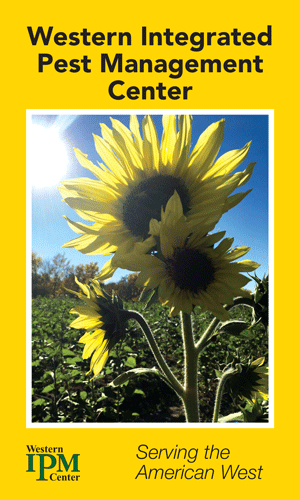
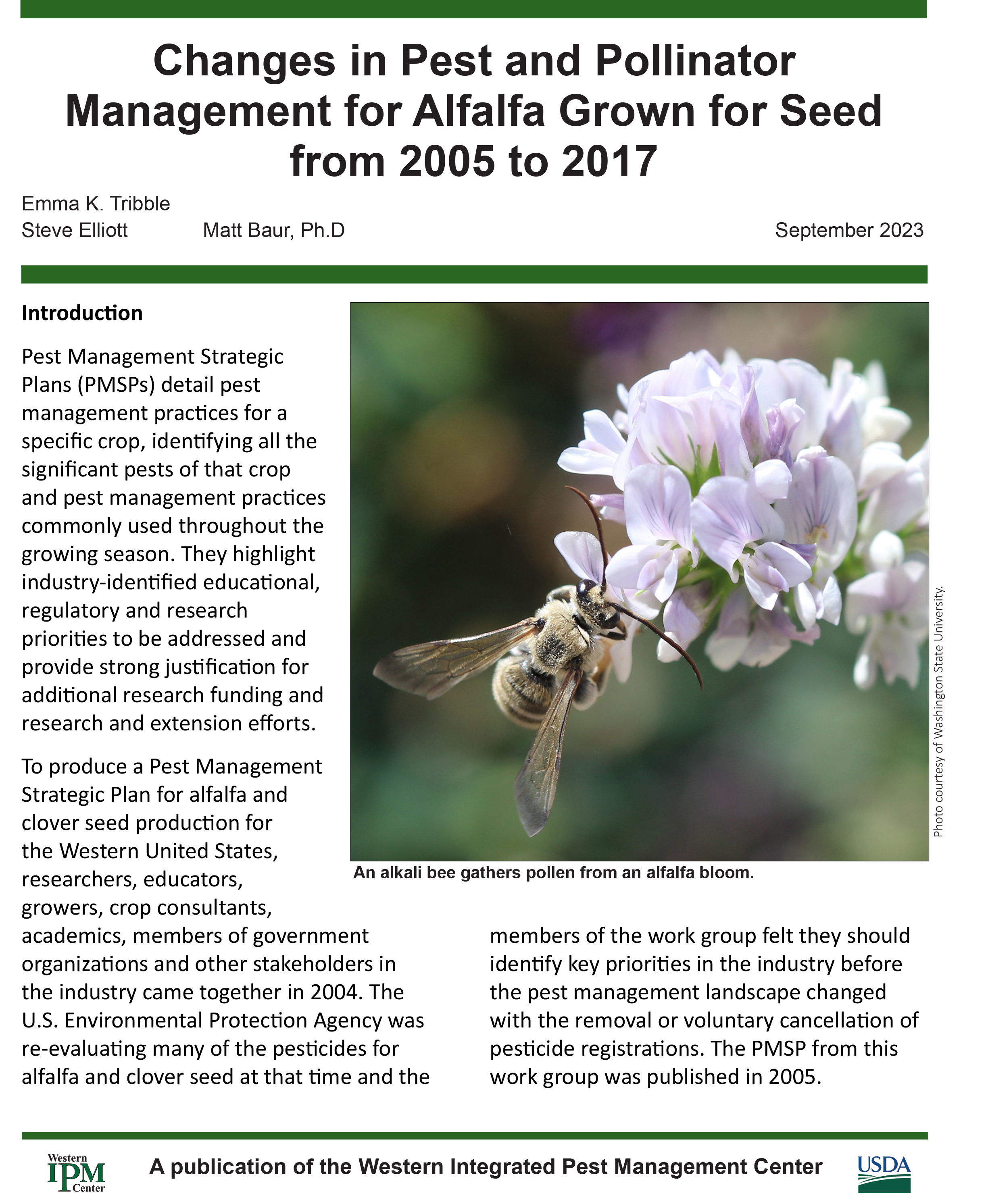



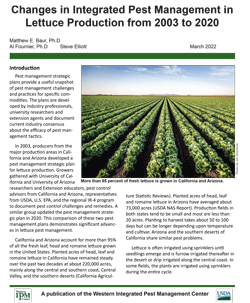
.gif)
